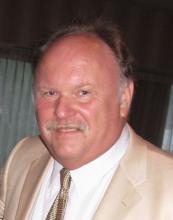Pete Kaluszyk is the ideal person to share his experience and wisdom about the Certified Anesthesiologist Assistant (CAA) program. After 41 years working as a Certified Anesthesiologist Assistant, he still wholeheartedly feels that it's a wonderful field to go into and that the CAA program has only improved over time. He gave his insight into how he thinks the program has changed for the better, and what he believes new students should keep in mind.
What do you do specifically for Case Western Reserve University?
My official title at CWRU is Director of Special Projects. I’m involved in teaching some of the classes, helping to develop enhanced curriculum, reviewing new candidates advising students, and assisting the program’s director. Recently, I’ve also given lectures on advocacy, professionalism, ethics & diversity, how to find a job, and the history of the CAA program.
What is the American Academy of Anesthesiologist Assistants (Quad-A) and your role in it?
I’ve been a part of Quad-A for about 30 years. I was president five times, I’ve served as the vice president, and as secretary. I'm currently on the board of directors. Quad-A’s mission is to support the anesthesiologist assistant profession. This covers everything from setting up and supporting educational programs, establishing relationships with other anesthesia related professions, being involved with state licensing laws and helping people to get hired. We have an annual meeting where lectures are presented and CAAs can receive continuing medical education credits (CMEs). Recruiters from hospitals are at these annual meetings, so those who are finishing or have already finished the program have the opportunity to job hunt.
What drew you to the CAA program & profession?
It was kind of an accident, or fate. I was a biology major and had no idea that the CAA program existed. A fraternity brother of mine was the one who made me conscious of the program. Unfortunately, I didn’t discover it until I was a senior. I decided to sign up anyway and started in the two "gateway" courses to the program. Because of the timing, I got my biology degree first and then re-enrolled to get my Anesthesiologist Assistant degree.
How has this profession changed overtime?
In the terms of functionality, or the ‘basic model’ so to speak, it really hasn’t changed much. At the beginning of the program up to now, you’re still under the medical direction of an anesthesiologist. However, there have been dramatic changes in areas such as technology, pharmaceuticals, and advances in surgery. Medication and monitoring technology are very different nowadays. There’s been an increase in anesthesia safety. Most of the machines now have fail safes and medication is shorter acting, so it doesn’t linger in the patient’s system. The drug delivery system has also changed for the better in how medication is administered.
Our monitoring became more precise and more information is received in real time. Computer aided record keeping has also exploded in the last ten years. All the data that shows up on our monitors can be put directly into the patient’s record, then we can go in and manually change or add anything necessary. Because of the automation, we can pay more attention to our patients.
What would you tell current students of the CAA program?
I’d say to carry yourself professionally every day. The patient always comes first.
Second would be to advocate for your profession. If you want to see growth in any profession you can’t just sit idly by and not participate. You have to be involved and aware of what’s happening around you. One of the best ways to do that is to join state organizations like the AAAA. If you don’t participate, you’re limiting your choices. Everything impacts what's going on, so you have to be aware of that so you can stay "dialed in."
Would you still say it’s a great field to go into?
Well, the best thing I can tell you is that I did it for 41 years. So yes, it is a great field. Not only that, but it’s even improved over time. The teaching has improved, the opportunities have improved, and the program has an increasingly bright future. Opportunities abound for the graduates. They can work directly in the field as a CAA, they can teach, and they can work as a leader on the state or national level. You can’t rest on your laurels, and that’s not something this program allows. Progress and improvement is constantly made.


